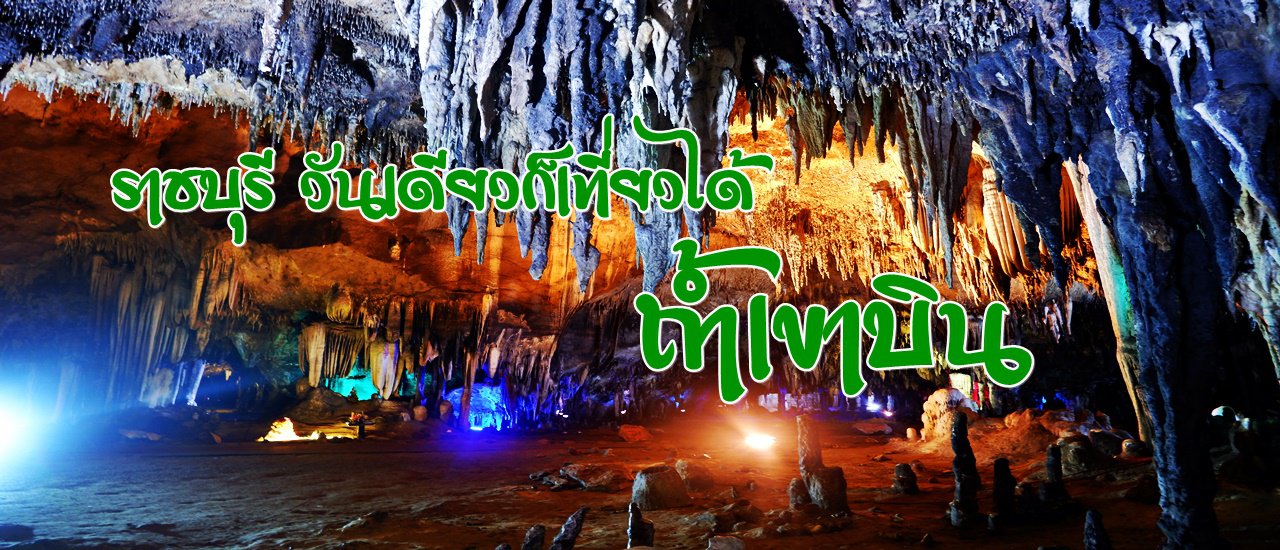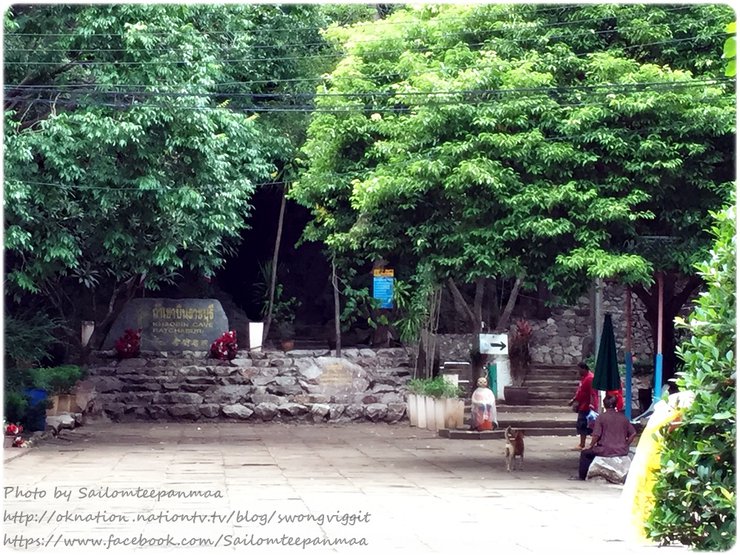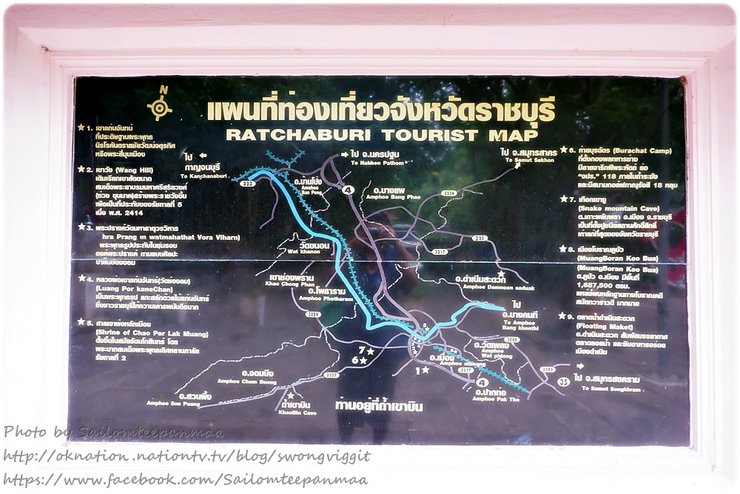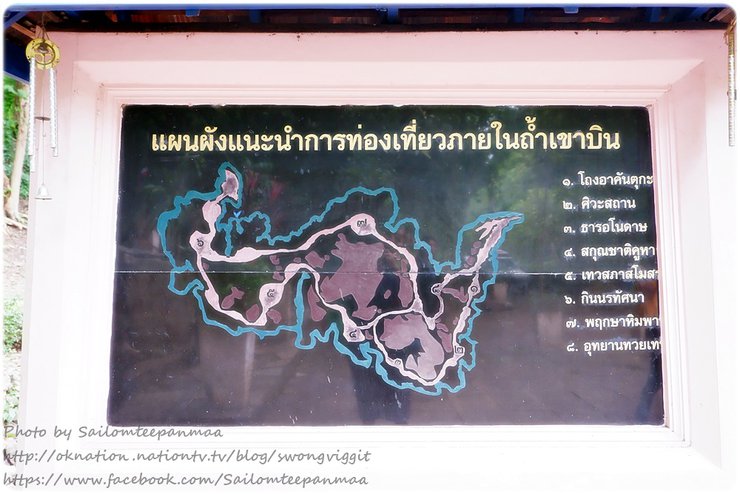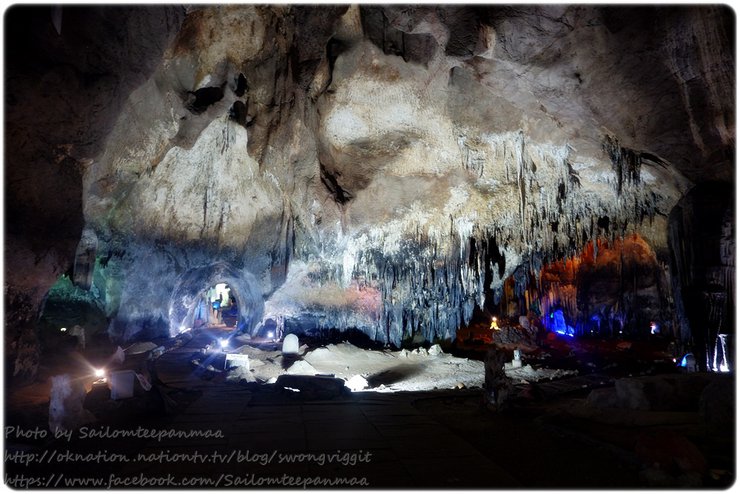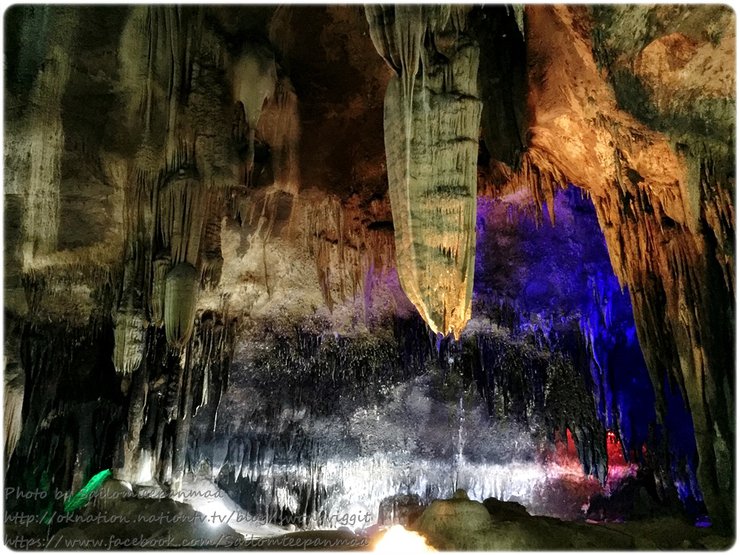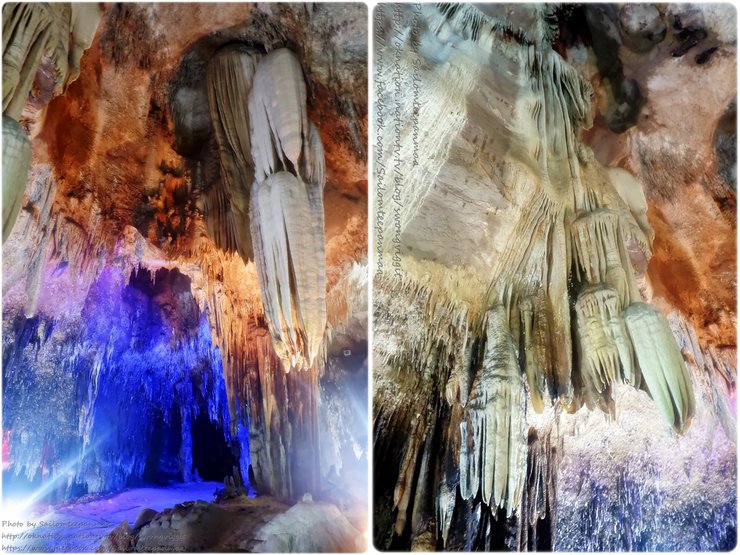
After leaving Khao Ngu Stone Park, we continued driving for a short while and arrived at Khao Bin Cave in Ratchaburi. This beautiful natural tourist attraction is located within a national forest reserve. The cave is filled with stunning stalactites and stalagmites.
In 1987, the Tourism Authority of Thailand commissioned the Academic Service Center to design and develop Khao Bin Cave. Electrical installations, lights, and colors were installed to highlight the cave's beauty. It is located on the Ratchaburi-Jom Buaeng Road, approximately 20 kilometers from the city center.



The Cave of the Flying Mountain
The Cave of the Flying Mountain, located in the Mueang District of Ratchaburi Province within a national forest reserve, derives its name from a fascinating legend. The story goes that a Chinese merchant sailing a large junk ship encountered the mountain, causing the ship to collide and chip away a portion of its peak. This incident led to the mountain being dubbed "Khao Bin," which is believed to have been corrupted over time to become "Khao Bin." Another theory suggests the name originates from a unique feature within one of the cave's chambers. This chamber boasts a stalactite formation resembling a bird with outstretched wings, poised for flight, hence the name "Khao Bin," meaning "Flying Mountain."



The cave is located at an altitude of approximately 272 meters above sea level. The cave entrance is 10 meters above ground level and covers an area of approximately 5 rai. The entrance has been developed by the province to create a smooth earthen path leading into the cave for approximately 50 meters. At this point, the path splits into two directions. The left path leads to the back of the cave, which is 300 meters deep. The right path follows the contours of the ridge and leads to the back of the cave, which is approximately 200 meters deep. The cave is illuminated with electric lights, showcasing the beauty of the stalactites, stalagmites, stone pillars, and newly formed soda straws. The cave's beauty can be appreciated year-round.




Khao Bin Cave is divided into 8 large chambers, each named after the stalactites and stalagmites found within and the historical tales associated with them. These chambers are:
1. The Hall of Visitors
This chamber serves as a welcoming space for guests, adorned with newly forming stalactites and stalagmites. Entering this hall signifies great fortune and numerous companions. As one passes through, sorrows and anxieties dissipate. The upper portion of the cave wall reveals the visage of an elderly man.



2. Shiva's Place
Those who touch the stone pillar, which is considered a sacred pillar of the city, will be blessed with happiness and success in all their endeavors. Any illness will be cured immediately, and long-awaited fortune will be received instantly. In addition, at the entrance, there are beautiful stalactites and a stunning travertine dam.



3. Thara Anodat
Those who enter this sacred chamber will be bestowed with titles as magnificent as the travertine waterfall, cascading upon visitors with its colorful, bacon-like curtains unlike any ordinary stone. The small chamber, with its cave walls adorned with frothy rock formations, resembles a coral garden beneath the sea.



4. Skunachai Kuha
The natural wonder of limestone formations resembling a bird with outstretched wings, the origin of the cave's name, is believed to grant those who witness it a far-sighted vision like that of the mythical Garuda. It is said that those who visit the cave will be safe, both themselves and their companions. The cave walls are composed of sturdy stone pillars, and above the back of the Garuda, there is a small, mysterious cave awaiting exploration by visitors.




5. The Divine Assembly Hall
This sacred place is believed to be a gathering spot for the divine beings residing within the cave. Those who reach this sacred chamber in the future will experience prosperity, freedom from suffering and sorrow, and a sharp mind. They will be able to answer any question comprehensively. The chamber contains hundreds of massive stone pillars and sharp stalactites hanging from the ceiling, resembling the intellect of the visitor. Behind the stone pillars lies a newly formed waterfall.




6. Kinnari Thasana or Kinnari Thasana
A pure white cave like snow that has been built up for thousands of years. Anyone who sees it will have a long life and will be honored like the 3 pure lotus flowers that hang from the ceiling of the cave. The inner walls of the cave are made up of stalactites of various sizes that are beautiful and magnificent. In the deepest part of the cave, you will find a turtle-shaped rock (gold) and a sacred mineral spring that never dries up. It is used as holy water and holy water by famous monks.




7. Phruksa Himmapan
The grandeur of the stalactites and stalagmites, smooth as a bat's outstretched wings, inspires a sense of awe in those who enter this chamber. It is believed that those who reach this room will be blessed with a prosperous home and a joyful heart. The coolness of the cave will bring comfort, and the visitor will be loved and relied upon by their descendants. On the other side of the cave lies a rock garden, adorned with trees shaped like stalactites and countless ancient stone pillars.




8. The Divine Park
This sacred space within the cave serves as a gathering place for revered deities. The impressive stalactites are revered by visitors as spiritual anchors, offering solace and a source of hope. Devotees seek blessings for good fortune, prosperity, and freedom from suffering and illness.




The journey from the mouth of the cave to the exit is a testament to the grandeur of nature's creations. While the air inside may be stifling and oppressive, the experience is undoubtedly worthwhile, preserving this natural heritage for future generations.




The hall of another room




Beautifully decorated with lights




Another hall



The exit, which is also the entrance to the cave.
Related Topics
A Day Trip to Ratchaburi: Visiting the Shrine of the Snake King and the Rishi Cave
This sentence describes a one-day trip to Ratchaburi, Thailand, where visitors can explore the Shrine of the Snake King and the Rishi Cave.
Ratchaburi: A Day Trip to Phra Buddhabat Cave and Khao Ngu Stone Park
A Day Trip to Ratchaburi: Khao Bin Cave
This sentence advertises a day trip to Ratchaburi, specifically mentioning Khao Bin Cave as a destination.
สายลม ที่ผ่านมา
Wednesday, February 26, 2025 8:41 PM

